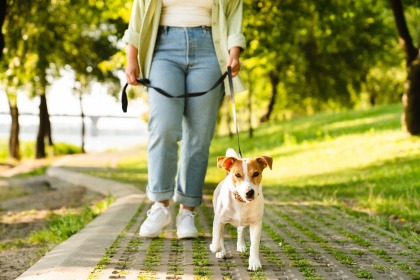Training Small Breeds vs. Large Breeds: Key Differences
Training your canine companion is an essential part of responsible pet ownership, but the approach to training can vary significantly based on the size of your dog. Small breeds and large breeds have distinct characteristics and needs that require different training strategies. In this article, we’ll explore the key differences between training small breeds and large breeds, offering insights into their unique behaviors and introducing the role of technology with a focus on the Dog Behavior App.
Understanding Size-Related Behavioral Differences:
1. Energy Levels:
- Small breeds often have higher energy levels relative to their size.
- Large breeds may have bursts of energy but generally require less intense exercise.
2. Socialization Needs:
- Small breeds may be more delicate and require careful socialization to prevent fear-based behaviors.
- Large breeds may benefit from early and consistent socialization due to their potential size and strength.
3. Training Sensitivity:
- Small breeds may be more sensitive to loud noises and abrupt movements, requiring a gentle training approach.
- Large breeds may be more robust but still benefit from positive reinforcement and consistent training methods.
Training Small Breeds: Tips and Considerations
1. Gentle Handling:
- Handle small breeds with care, as they may be more delicate.
- Gentle training methods and positive reinforcement are effective for building trust.
2. Shorter Training Sessions:
- Small breeds may have shorter attention spans.
- Keep training sessions brief and engaging to maintain their interest.
3. Socialization with Caution:
- Introduce small breeds to new people and environments gradually.
- Use caution during socialization to avoid overwhelming them.
4. Positive Reinforcement:
- Small breeds respond well to positive reinforcement.
- Use treats, praise, and play to motivate and reward desired behaviors.
Training Large Breeds: Tips and Considerations
1. Start Early:
- Begin training large breeds early due to their faster growth and development.
- Establish basic commands and manners during puppyhood.
2. Consistent Leadership:
- Large breeds may test boundaries, emphasizing the importance of consistent leadership.
- Clearly communicate rules and expectations from the beginning.
3. Ongoing Socialization:
- Large breeds benefit from ongoing socialization throughout their lives.
- Exposure to various environments and situations helps prevent fear-based behaviors.
4. Positive Reinforcement and Firmness:
- Use positive reinforcement, but also be firm and consistent with commands.
- Large breeds need to understand and respect their owner as the pack leader.
The Role of Technology: Dog Behavior App
Enhance your understanding of size-specific training needs with the Dog Behavior App. This app often includes modules on training small and large breeds, behavior insights, and expert advice. Accessing the app provides valuable resources to tailor your training approach based on your dog’s size and unique characteristics.
Size-Adapted Training: A Personalized Approach
1. Adapt Training to Individual Personalities:
- Consider the individual personality of your dog, regardless of size.
- Some small breeds may be more robust, and some large breeds more sensitive.
2. Regular Exercise for All Breeds:
- Ensure regular exercise for both small and large breeds.
- Physical activity is vital for their overall well-being and behavior.
3. Consistency is Key:
- Consistency in training is crucial for all breeds.
- Establish clear rules, and consistently reinforce positive behaviors.
4. Professional Guidance:
- Seek professional guidance if needed, especially with specific breed traits or behavioral challenges.
- Professional trainers can offer personalized advice based on your dog’s unique needs.
Conclusion:
Training small breeds and large breeds involves recognizing their distinct characteristics and adapting your approach accordingly. By understanding the key differences and leveraging the insights provided by the Dog Behavior App, you can tailor your training methods to suit the needs of your furry friend, promoting a positive and successful training experience regardless of their size. Remember, each dog is an individual, and a personalized approach ensures a strong bond and effective communication between you and your canine companion.





